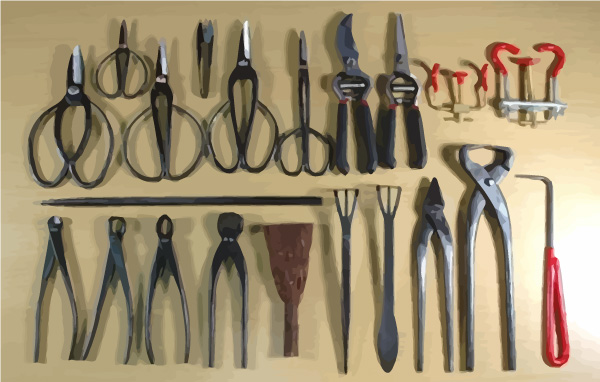How to Maintain A Bonsai
Table of Contents
Once you have trained, or started to train, a bonsai into a chosen style, it is vital to keep the plant growing well. To do this, you need a knowledge of the basic horticultural skills, such as placing the tree in a suitable position, and watering and feeding it correctly. You also need to know how to root prune and repot the bonsai from time to time. Routine pruning is also necessary to maintain the shape of the bonsai. Finally, you need to be vigilant in guarding the plant against pests and diseases.

Siting a Bonsai
It is vital to position your bonsai trees in a location that gives them a suitable climate, light, and humidity levels. The position should also provide a good viewpoint, so that you can admire the trees, and sufficient room for you to work comfortably on the bonsai.
Listed below are some general points to help you site the bonsai, but the precise location must depend on the individual tree, and the local conditions. If you are a newcomer to bonsai, or have only recently moved to a new area, contact the local bonsai society for advice.
Climate
It is a popular misconception that bonsai should be grown indoors as houseplants. In fact, most are hardy trees that need to be grown outdoors in the open. If you bring them inside, it should be only for a day or so. Even outside, however, the bonsai will need more attention than full-sized specimens of the same species in the open garden. Roots growing in bonsai pots are less protected than roots in the ground, and easily become too cold, hot, wet or dry, according to weather conditions.
The best advice is to avoid extremes. In temperate countries like England, most bonsai can stay outdoors all year, but in areas such as California and parts of Australia, bonsai need shading against the hot sun. In cold places like Scandinavia, the north-eastern USA, and Canada, the trees must always be protected adequately against frost.
Viewing Level
Bonsai look best on shelves or raised stands, so that they are at eye level. Eye level varies, of course: the height of the raised area will depend on whether the viewer will be sitting or standing. Viewed from a sitting position, bonsai should be 3ft (lm) above ground level; or at 4-5ft (1.2-1.5m) when seen from a standing position. However, this level is too high for easy day-to-day maintenance, so a compromise is often made, and the trees are set slightly lower, at table-top height.
Care in Winter
How much winter protection is needed varies from species to species, and depends on the conditions where you live. Protect hardy trees against wind and frost, but do not bring them indoors; a heated room will break their dormancy into new sappy growth. They do need maximum light, so a cold frame or a well-ventilated greenhouse will make good winter quarters. Alternatively, place the trees, especially those with delicate twigs, underneath their display bench, dropping a clear plastic “curtain” down in front of them to screen off the worst of the weather. Cold winds are particularly damaging to the foliage of evergreens.
Take particular care of the plant's roots, especially fleshy ones such as those on a trident maple. Even if you leave the main part of the tree unprotected, plunge the pot into the ground or, better still, into a prepared bed of pine needles or similar insulation material.
Bonsai Indoors
Over recent years, bonsai enthusiasts in temperate climates have become increasingly interested in growing tropical and sub-tropical bonsai indoors. This is a difficult operation: most trees have been developed outdoors in their home country and exported to temperate countries where they are kept in heated, humid greenhouses before going on sale. An ordinary suburban living room can perhaps provide the level of warmth of the tree's native Taiwan or Philippines, but not the humidity and light it needs. To keep such “indoor” material happy, grow it in a conservatory or greenhouse, displaying it in the house for only a few days at a time. Certainly, it does seem to be difficult to keep an indoor subject happy in the average living room for more than a year. As indoor bonsai become more popular, growers will learn how to maintain them for longer periods.



Leave a Reply